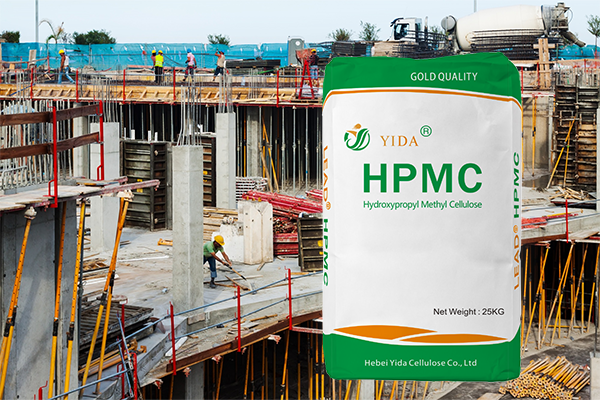In the realm of construction, innovation is key to ensuring durability, efficiency, and sustainability. Among the myriad of materials available, Hydroxypropyl Methylcellulose (HPMC) stands out as a versatile additive, offering a multitude of benefits to various construction applications. In this article, we delve into the performance, applications, and characteristics of Building Grade HPMC, shedding light on its indispensable role in modern construction.

Performance
Building Grade HPMC is renowned for its exceptional performance-enhancing properties. As a cellulose ether, it serves as a vital admixture in the production of construction materials, including cement mortar, gypsum mortar, and more. One of its primary functions is to improve workability and consistency, enabling easier handling and application of these materials. Moreover, HPMC acts as a water retention agent, significantly reducing water loss during the curing process. This enhances the hydration of cementitious materials, ultimately leading to increased strength and durability of the final product. Additionally, HPMC imparts excellent thickening properties, allowing for better sag resistance and improved adhesion to vertical surfaces.
Applications
The versatility of Building Grade HPMC makes it indispensable across a wide range of construction applications. In cement mortar, it serves as a vital component, enhancing its performance in various aspects. HPMC helps to prevent segregation and bleeding, resulting in a more homogeneous mixture with improved stability and cohesion. Moreover, it enables the production of self-leveling mortars, facilitating smoother and more even surfaces. In gypsum-based materials, such as gypsum mortar and plaster, HPMC acts as a key additive, enhancing workability, reducing cracking, and improving surface finish. Its compatibility with other additives and construction chemicals further expands its applications, making it an essential ingredient in formulations for tile adhesives, grouts, renders, and more.
Characteristics
Building Grade HPMC exhibits a myriad of characteristics that make it ideal for construction applications. Firstly, it is highly water-soluble, allowing for easy and uniform dispersion within the construction mixtures. This ensures consistent performance and reliable results. Additionally, HPMC is non-ionic and pH-stable, making it compatible with various construction materials and chemical environments. Its non-toxic nature and environmental friendliness further enhance its appeal as a sustainable construction additive. Moreover, HPMC is available in a wide range of grades and viscosities, allowing for precise customization to suit specific application requirements. Whether it's improving workability, enhancing strength, or achieving better surface finish, Building Grade HPMC offers a tailored solution for every construction challenge.
Table: Typical Properties of Building Grade HPMC
| Property | Value |
|---|---|
| Appearance | White or off-white powder |
| Methoxy Content (%) | 19.0 - 24.0 |
| Hydroxypropoxy Content (%) | 4.0 - 12.0 |
| Moisture Content (%) | ≤ 5.0 |
| pH Value (1% Solution) | 5.0 - 8.0 |
| Viscosity (2% Solution) | 100 - 200,000 mPa·s |
| Solubility | Soluble in water |
| Toxicity | Non-toxic |
In conclusion, Building Grade HPMC emerges as a cornerstone in modern construction, offering unparalleled performance, versatility, and sustainability. Its role as a multifunctional additive extends beyond mere enhancement of materials; it paves the way for innovation, efficiency, and excellence in construction practices. With its myriad of benefits and customizable properties, Building Grade HPMC continues to shape the landscape of construction, ensuring a brighter, more resilient future for the built environment.
Contact us to get high quality and low price HPMC.
Copyright:@2020-2021
Comments Please sign in or sign up to post.
0
0 of 500 characters used